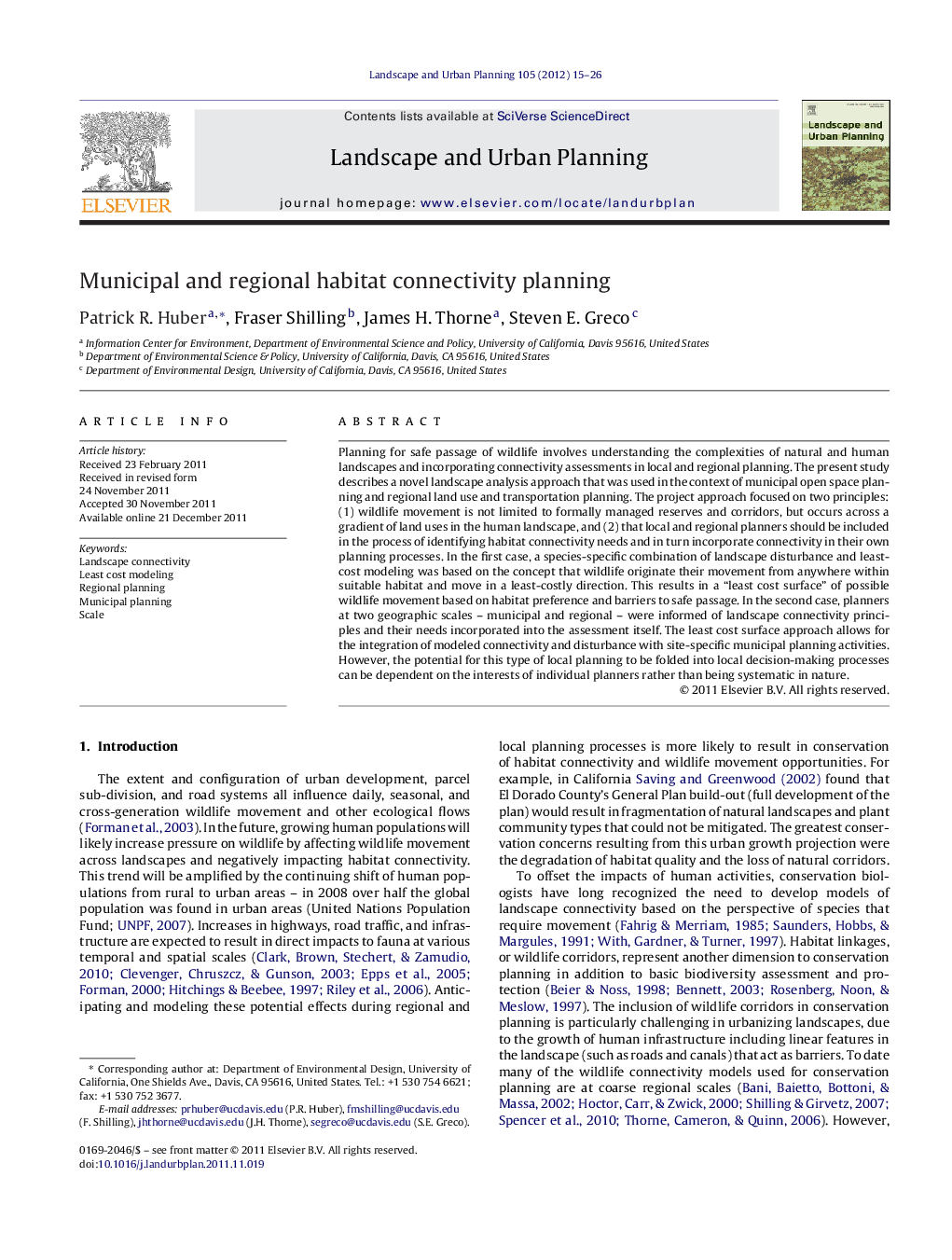| کد مقاله | کد نشریه | سال انتشار | مقاله انگلیسی | نسخه تمام متن |
|---|---|---|---|---|
| 1049577 | 1484650 | 2012 | 12 صفحه PDF | دانلود رایگان |

Planning for safe passage of wildlife involves understanding the complexities of natural and human landscapes and incorporating connectivity assessments in local and regional planning. The present study describes a novel landscape analysis approach that was used in the context of municipal open space planning and regional land use and transportation planning. The project approach focused on two principles: (1) wildlife movement is not limited to formally managed reserves and corridors, but occurs across a gradient of land uses in the human landscape, and (2) that local and regional planners should be included in the process of identifying habitat connectivity needs and in turn incorporate connectivity in their own planning processes. In the first case, a species-specific combination of landscape disturbance and least-cost modeling was based on the concept that wildlife originate their movement from anywhere within suitable habitat and move in a least-costly direction. This results in a “least cost surface” of possible wildlife movement based on habitat preference and barriers to safe passage. In the second case, planners at two geographic scales – municipal and regional – were informed of landscape connectivity principles and their needs incorporated into the assessment itself. The least cost surface approach allows for the integration of modeled connectivity and disturbance with site-specific municipal planning activities. However, the potential for this type of local planning to be folded into local decision-making processes can be dependent on the interests of individual planners rather than being systematic in nature.
Figure optionsDownload as PowerPoint slideHighlights
► We develop a two-dimensional least cost surface model for multiple focal species to analyze landscape connectivity at multiple scales.
► Results are used to identify areas of potential conflict between wildlife connectivity and human land uses.
► Spatial scale has a major influence on the results of connectivity analyses.
► Individuals are important within the land use planning realm for fostering interest in conservation issues.
Journal: Landscape and Urban Planning - Volume 105, Issues 1–2, 30 March 2012, Pages 15–26